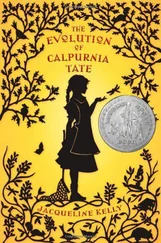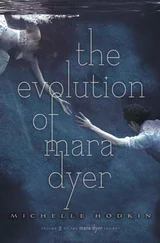“We’re sitting on about two hundred acres,” Mr. Lawrence continued, to Lydia. “The whole property’s surrounded by a twenty-foot-high electric fence. That’s more to keep intruders out than it is to keep the animals in. We’ve got our own little Eden here, our own Noah’s Ark. We acquire most of the animals from the entertainment industry, biomedical labs, zoos. We just want to give the animals a good home and a chance to be happy, to roam the land. Inside the property, the animals have free range. Of course in the winter most of the animals stay inside in their barns, where it’s warm. All the barns are good and heated. Most of them are African animals. They’re not used to these winters. It’s a nice day, though. I bet we’ll see some of them out and about.” Lydia nodded and put on her sunglasses. “The chimps, though?” said Mr. Lawrence. “The house chimps we just treat like regular members of the family. They’re used to living with people. They sleep in our house, they eat our food. We live with them. We live like a family. Everybody who works for us knows to treat them just like they’d treat me or Regina.”
Soon, as Mr. Lawrence piloted the rumbling vehicle down the narrow dirt road that wound snakily through the grounds of the ranch, we espied some of the animals that I had, in the life I led previously as an ape, grown up in close proximity to, often hearing, but seldom actually catching sight of, in the Lincoln Park Zoo: zebras, giraffes, rhinoceri, hippopotami, and even several elephants, lumbering around in the distance, looking absurdly out of place amid all the coniferous trees and snowy hills. This was the Lawrence Ranch, in the mountains of southern Colorado. This place was to be our new home.
Mr. Lawrence also drove us around the perimeter of his vineyard. He was a renaissance man, a man of great and many passions, but two of them ruled above the rest like a king and queen: one was the fate of the animals on this earth, and the other? — wine. Mr. Lawrence was an avid and passionate oenophile. His ranch was — is, I should say — located in Grand Valley, a wine-growing region on the western slope of the Rocky Mountains. The vineyard was a large swath of his property that no animals were allowed into. Not even me or Clever were allowed to go there. Maybe he didn’t trust us not to pick and eat the grapes that grew in gorgeous plump dew-dappled bunches all along the rows of long fences, and if so, this distrust was probably an accurate one. I loved the smell of the vineyards, though, and in the future Clever and I would take many a long walk together along the perimeter of the vineyard, breathing the fruit-sweeted air and discussing philosophical subjects.
We toured the grounds of the ranch all day, visiting the barns where the less adventurous of the Lawrence Ranch animals slept in beds of straw beneath tracks of red glowing heat lamps that hung from the high ceilings of these structures, these huge metal barns that were more like airplane hangars, built cavernous enough to comfortably house elephants and rhinos. We saw the clear black water of a creek trickling over smooth stones beneath ledges of ice, descending from a spring in the nearby mountains. We saw the antelope and the gazelles, the gnus and the gemsboks, the emus, ostriches, zebras, and Bactrian camels. A huge humid glass enclosure full of plants and trees housed smaller animals: wombats, monkeys, lemurs, gibbons, echidnas, and tapirs. Who would have thought that there would be a remote expanse of acreage somewhere in the Wild West of Colorado positively teeming with all manner of exotic animalia, a secret peaceable kingdom hidden deep in the mountains of the New World?
In 1970 (twenty-five years before I arrived at the Lawrence Ranch) Dr. Henry Troutwine, a cognitive research psychologist at Princeton University, initiated the Clever Hands project, now mostly famous for being widely regarded as a failure.
At the time the Clever Hands project was the most ambitious, well-organized and well-funded experiment in ape language acquisition to date. Dr. Troutwine acquired a male infant chimpanzee from Bill Lemon, a rogue psychologist at the University of Oklahoma. Lemon was a staunch Freudian, which is extremely unusual for a research psychologist. Lemon was also a chimp breeder. He owned a farm just outside of Norman, Oklahoma, where he raised and kept a menagerie of exotic animals — among them a large group of chimps that he kept on an island in the middle of a lake on his farm. Lemon was intensely interested in experiments in cross-fostering chimps in human households. He would lend out his infant chimps to research volunteers (most of them his graduate students) to raise in their homes as human children. Lemon had promised to sell Dr. Troutwine an infant chimp for his experiment as soon as one became available; so, although Troutwine had not yet fully set up the logistics of the experiment, when a baby chimp was born at the Lemon farm, he jumped at the chance to acquire him. Troutwine bought the baby from Lemon and brought the two-week-old chimp back to Princeton, New Jersey, where he had him placed as a foster child in the home of his first volunteers, the Saltonseas.
Millicent Saltonsea was a psychologist, and her husband, Winn Saltonsea, was a ponytailed poet who dressed in white linen pants, came from a patrician line of old money, and spoke with a Locust Valley lockjaw. For the first year of the project, Clever Hands — as he was whimsically dubbed — lived with the Saltonseas and their four young children in their palatial estate in the suburbs of Princeton. Troutwine’s idea was that Clever Hands would be brought up in a human environment, co-reared alongside the Saltonseas’ four children. Meanwhile, Troutwine was rushing to put together the funds and facilities necessary for the experiment. He wanted to see if a chimpanzee could learn American Sign Language. There had been a few other notable attempts to teach sign language to chimps — most notably Allen and Beatrice Gardener’s experiments with the female chimp Washoe — but those experiments were dogged by accusations of sloppy methodology and data-fudging, and the results were dubious and disappointing at best. Troutwine thought this was in part because the chimps in previous experiments had been too old when serious attempts at language instruction had begun; you must begin molding the plastic of an animal mind with language right from birth. (I am an exception.) It is worth mentioning that neither Millicent nor Winn Saltonsea nor any of their children were fluent — or even capable — ASL signers. Troutwine had an ASL teacher instruct them in signs that they might impart to Clever. Unfruitful months passed as Troutwine dithered, and Clever quickly became too big and unruly for Winn Saltonsea. After a relatively short time of living with baby Clever, Winn had come to regret agreeing to house the chimp. Clever had begun to tear apart books, furniture, drapes — anything in the Saltonseas’ home that could be torn apart, including their marriage. But that is another story.
The Saltonseas had to forsake Clever and end their involvement in the project. Clever was passed from one home to another (never, by the way, to Troutwine’s own home) until Troutwine was finally able to secure enough funding and resources to begin the experiment in earnest. Eventually he managed to secure the use of a large and elegant Georgian mansion near the Princeton campus, owned by the university. The donor of the property had envisioned it as a botanical research station, as the house featured an English garden, sprawling lawns, koi ponds, and a greenhouse. For whatever reason this never happened, and since its donation the property had sat vacant and neglected, and had fallen into disrepair while the Princeton administration dragged its feet as to the question of what to do with it. Through faculty chatter Troutwine became apprised of its existence and asked Princeton to let him headquarter the Clever Hands project there. They said yes, and that was that: he had the house refurbished and chimp-proofed to the best of his knowledge and funding, hired a small army of caretakers and tutors to provide round-the-clock handling and upkeep, and moved Clever into the house. Only then was Troutwine able to provide enough space, facilities, and personnel to properly throw everything he could into the experiment, and by that time Clever was nearly three years old.
Читать дальше












